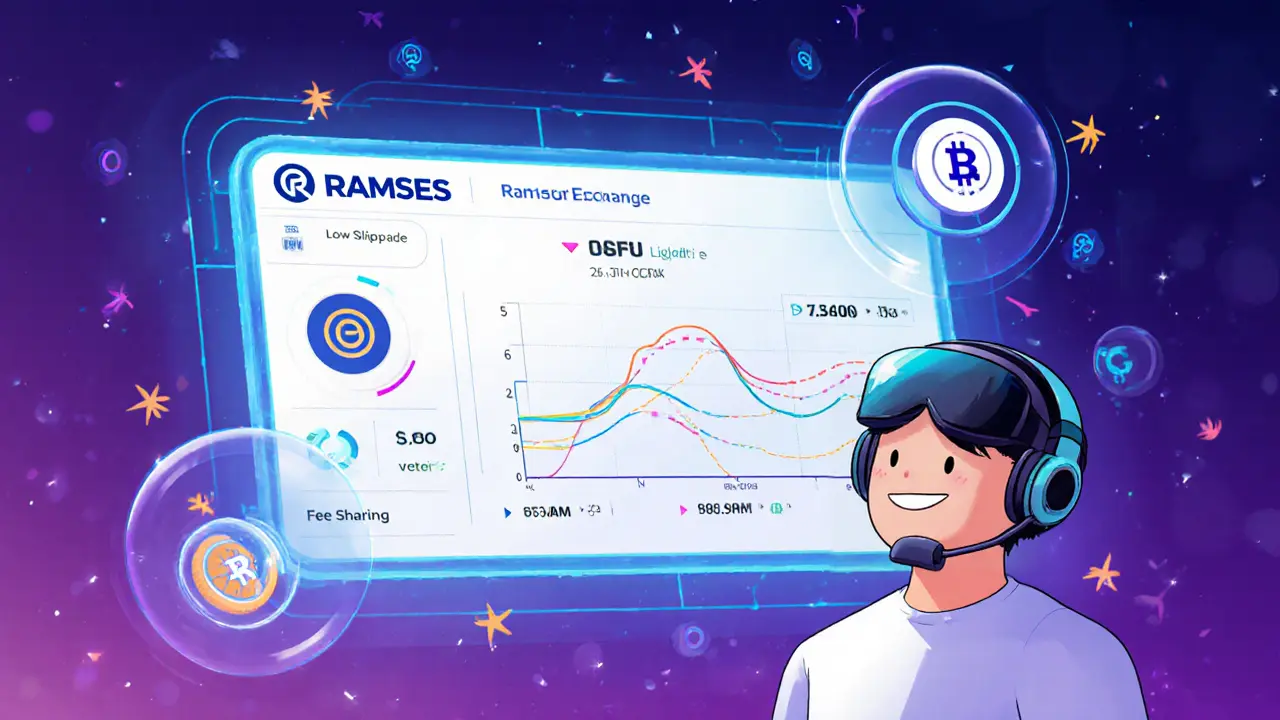In-depth Ramses exchange review covering tech, tokenomics, multi-chain rollout, user guide, pros/cons, and FAQs for crypto traders.
Ramses Exchange Review – In‑Depth Look at Fees, Security & Liquidity
When talking about Ramses Exchange, a cryptocurrency trading platform launched in 2023 that offers spot, margin, and futures markets. Also known as RamsesX, it tries to blend low fees with strong security. Understanding how this platform works helps you avoid costly mistakes before you start trading.
As a cryptocurrency exchange, it connects buyers and sellers of digital assets through an online interface, Ramses relies on a clear fee structure, the set of charges applied to trades, withdrawals, and deposits. The platform also implements robust security protocols, such as multi‑factor authentication, cold‑storage wallets, and regular audits. Finally, its liquidity, the ability to execute large orders without major price impact determines how smooth your trades will be. These four pieces—exchange type, fees, security, and liquidity—form the backbone of any thorough exchange assessment.
Ramses exchange review starts with fee analysis because fees eat into every profit. Ramses advertises a maker fee of 0.08% and a taker fee of 0.12%, which is lower than many legacy platforms but higher than some ultra‑low‑fee DEXs. The fee model scales with volume, rewarding high‑frequency traders with discounts after reaching $1 million in 30‑day turnover. Withdrawal fees are flat for most coins, while network fees vary by blockchain. By comparing these numbers to Binance’s 0.10%/0.10% baseline and Kraken’s 0.16%/0.26% tiers, you can see where Ramses saves you money and where it might cost more.
Security is the next pillar. Ramses undergoes quarterly third‑party audits and holds a bug‑bounty program that pays up to $25,000 for critical findings. User funds are split between hot wallets (5%) for withdrawals and cold storage (95%) in geographically dispersed vaults. The platform enforces KYC/AML checks, but offers a limited‑verification tier for privacy‑focused traders, balancing compliance with user freedom. These security measures directly influence user confidence and regulatory standing, which in turn affect the exchange’s longevity.
Liquidity determines how fast and at what price you can trade. Ramses lists over 350 trading pairs, with deep order books on major pairs like BTC/USDT and ETH/USDT. Its market‑making program incentivizes professional liquidity providers with rebate fees, improving depth and reducing slippage for retail users. Compared to a thinner DEX like Uniswap V3 on the same assets, Ramses typically shows 30‑40% lower slippage on $10,000 trades. High liquidity also fuels tighter spreads, making day‑trading and arbitrage more viable.
What You’ll Find Next
Below you’ll discover a curated set of articles that dive deeper into each of these areas: detailed fee breakdowns, step‑by‑step security audits, and real‑world liquidity snapshots. Use the insights to decide if Ramses fits your trading style and risk tolerance.

